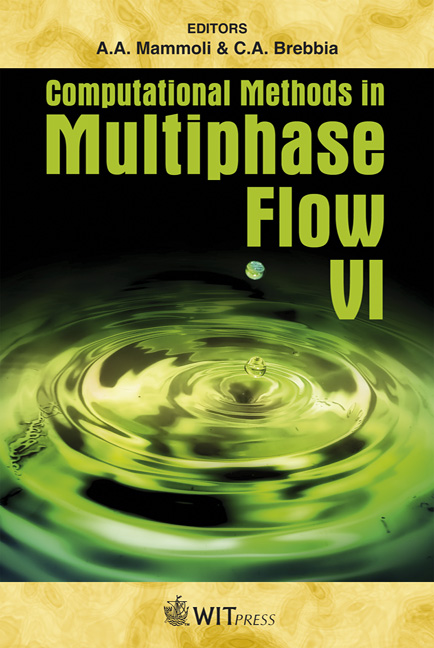Analogues Of Rayleigh-Taylor And Richtmyer-Meshkov Instabilities In Flows With Nonuniform Particle And Droplet Seeding
Price
Free (open access)
Transaction
Volume
70
Pages
12
Page Range
17 - 28
Published
2011
Size
2207 kb
Paper DOI
10.2495/MPF110021
Copyright
WIT Press
Author(s)
P. Vorobieff, M. Anderson, J. Conroy, R. White, C. R. Truman & S. Kumar
Abstract
The well-known Rayleigh-Taylor (RT) and Richtmyer-Meshkov (RM) instabilities characterize the behavior of flows where two gases (or fluids) of different densities mix due to gravity (RT) or due to impulsive acceleration (RM). Recently, analogous instabilities have been observed in two-phase flows where the seeding density of the second phase, e.g., particles or droplets in gas, and the resulting average density, is initially non-uniform. The forcing causes the second phase to move with respect to the embedding medium. With sufficient seeding concentration, this leads to entrainment of the embedding phase. The resulting movement is similar to the movement that would evolve in a mixing flow with no second phase seeding, but with non-uniform density (not unlike a mixture of lighter and heavier gases), where RT and RM instabilities develop in the case of gravityinduced and impulsive acceleration, respectively. The hydrocode SHAMRC has been used in the past to study the formation and growth of the RM instability. Here we attempt to use it to model the first order formation and growth phenomena of the new class of instability in two-phase flows first, by approximating the second phase as a continuous fluid with an averaged density, and second, by taking the relative motion of particles (droplets) into account explicitly. The initial conditions are varied to provide a wide range of instability growth rates. Comparison of the numerical results with experiment shows good agreement. Keywords: compressible flow, two-phase flow, instability, shock wave.
Keywords
compressible flow, two-phase flow, instability, shock wave





